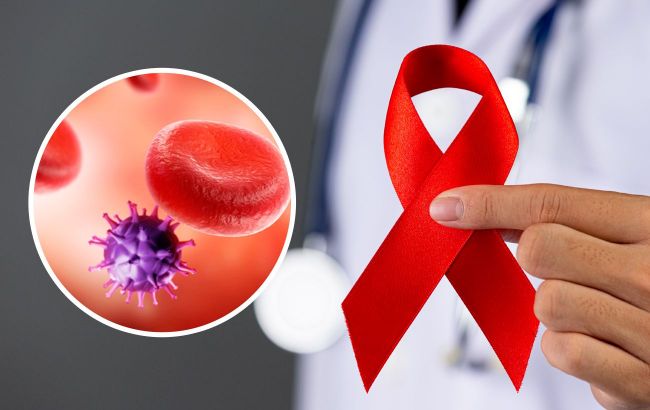World AIDS Day: How to fight the virus and whether it can be cured
 December 1 - World AIDS Day (collage: RBC-Ukraine)
December 1 - World AIDS Day (collage: RBC-Ukraine)
Every year on December 1, the world celebrates World AIDS Day. This problem never loses its relevance, as the number of infections does not decrease.
RBC-Ukraine explains what you need to know about HIV and AIDS and how to suppress the virus.
The following sources were used in the preparation of the material: materials from the Public Health Center.
What is HIV and how is it transmitted?
HIV is an infectious disease that develops as a result of infection with the human immunodeficiency virus (HIV), a long-term persistence of HIV in lymphocytes, macrophages, and nerve cells.
HIV is transmitted
- Through blood. When blood or other biological fluids containing blood from an HIV-infected person get into a healthy person;
- through sexual contact;
- from an HIV-infected mother to her child during pregnancy, childbirth, and breastfeeding.
However, it is also important to know about ways in which HIV is not transmitted:
- When sharing household items and utensils, working in the same room;
- in baths and saunas;
- through kissing;
- through hugs and handshakes;
- through sneezing and coughing;
- through mosquito or other insect bites.
This is the basis of HIV myths, so it is important to know.
After the end of the acute stage of HIV infection, an asymptomatic period develops that lasts 8-12 years. This is the time when a person becomes the most dangerous for their sexual partners, the immune defense system is disrupted, and diseases caused by pathogens of various infections develop.
This stage of the disease is called AIDS.
To avoid contracting HIV, you should maintain a healthy lifestyle, refuse to engage in HIV risky behavior, and use condoms during sexual intercourse.
How HIV/AIDS is treated
Previously, there were no medicines or other drugs for HIV and AIDS. However, today, doctors use antiretroviral therapy.
This is a method of treatment for HIV and AIDS, which is to suppress the reproduction of HIV in the body as much as possible.
ARV therapy helps to stop the virus from multiplying, and immune cells have the opportunity to recover and build up a defense against other viruses.
If a person has HIV, their treatment consists of taking one pill a day at the same time. However, this may vary depending on the treatment regimen and how long the virus has been in the person's body.
At the same time, it should be understood that therapy does not destroy the virus but only stops its reproduction.

